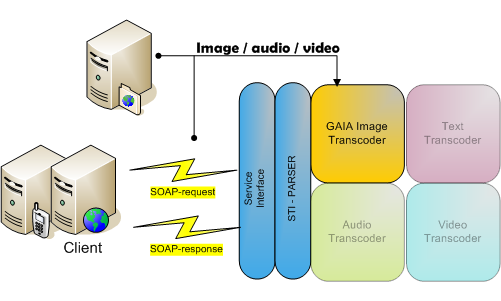GAIA Open Source Road Map
GAIA Reply
Open Source RoadMap
INTRODUCTION The first step of this evolution is called GaWis (GAIA Web Information System): the scope of this development is the implementation of an information system, that will simplify the interaction with WURFL, UAProf and any other device capabilities information source, exploiting the functionalities of database technology. The second step of our roadmap will see the implementation of a Transcoder Server (TS) compliant with OMA STI standard. We’d like to implement a transcoding server for image, video and audio too. The server will response to SOAP-RPC calls. GAIA WEB INFORMATION SYSTEMGaWis Web Information System release 1.0 has been published online September 2007.
All these functionalities are implemented over a software architecture based on open source frameworks (Spring, Hibernate, Java Server Faces, Axis) in order to compose an efficient, flexible and extensible solution.  Future developments:
The second step of our roadmap will see the implementation of a Transcoder Server (TS) compliant with OMA STI standard. We’d like to implement a transcoding server for image, video and audio too. The server will response to SOAP-RPC calls. As far as transcoding server architecture is concerned we’d like to implement the following components:
 |